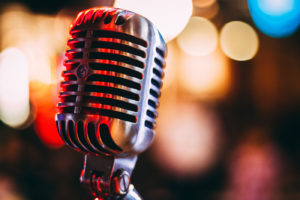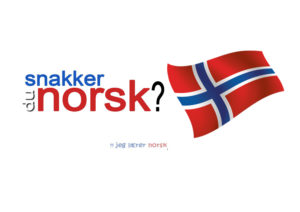- Séjour sur mesure
- Ebook
- Apprendre le norvégien
- Être entrepreneur
- Consulting
- Recettes
- Guides gratuits
- Tourisme
- Péages et ferries en Norvège
- Les aurores boréales en Norvège
- Consulting : conseils pour organiser votre voyage
- Préparer son voyage en Norvège
- Parlez quelques mots de norvégien lors de votre voyage
- 10 lieux à visiter à quelques heures d’Oslo
- Infos pratiques
- Le climat
- Venir en Norvège en voiture
- L’hiver en Norvège
- Activités à Tromsø
- Toute la Norvège
- Scandinavie
- Oslo
- Vestfold og Telemark
- Agder
- Vestland
- Innlandet
- Intégration
- Infos
- Média
- Boutiques
- Panier
Artistes Norvégiens

Artistes Norvégiens Vous me demandez souvent des recommandations pour écouter de la musique d’artistes Norvégiens, je vous ai donc fait une playlist sur Youtube avec plus de 50 artistes. J’ai mélangé tous les styles et toutes les époques, cela va donc des musiques traditionnelles Sami aux artistes contemporains ! Bonne écoute ! Lire les autres articles Regardez les vidéos Suivez moi sur Facebook Retrouvez le podcast gratuitement sur iTunes
artist, artistes, Featured, music, musikk, musique, norsk, Norvégiens
Learn norwegian

Learn norwegian The advice I give in this article has allowed me to reach B2 level in over 3 years without taking any lessons. It’s long but it works ! I’m only starting classes now to go faster and try to reach C1 level within 1 year, I’ll tell you if I get there ! Discount on lessons online Language History Learning How long it takes Methodes and links advice Learning norwegian can be long and expensive so I tried 3 different schools and you have discount with thoses codes : Note.no by Karense with her Youtube channel and her podcast – you have – 10% by using the code : « blonde10 » 🇳🇴 Norsk for deg de Cecillia Lønn – You have – 30% by using the code : « Une blonde en Norvège » 🇳🇴 Speak Norsk – You have – 5% by using the code: « ANNE5 » 30 % discount for Norwegian lessons Send an email to cecilielonn@gmail.comAdd me in copy: uneblondeennorvege@gmail.comand give the code “Une blonde en Norvège” to get the discount Here is what a lesson on « Norsk for Deg » looks like : More than 180 hours for only 130 kr / month if you become a member Between 50 and 80 hours on each lesson pack that you pay 700kr instead of 3000 kr with the code « Une blond en Norvège » https://www.youtube.com/watch?v=uS6VrNTbtS4&feature=emb_logo Language The Norwegian alphabet has 29 letters, 3 vowels more than in French: the « æ », « å » and « ø ». There are approximately 300,000 words in Norwegian (270,000 in French and 500,000 in English). Pronunciation of the « æ », « å » and « ø » : https://www.youtube.com/watch?v=l23CjariO0Ahttps://www.youtube.com/watch?v=t20e9OOPv90 The « o » are pronounced [o] before two consonants and [u] or [or] before a consonant, the « e » are pronounced [a], some « y » are pronounced [or] also. Sometimes we do not pronounce certain consonants in the middle or end of a word. Some difficulties then ! https://www.youtube.com/watch?v=HVcAD0aQWiM 3 official languages: Bokmål, Nynorsk and Sami. Bokmål and Nynorsk are written languages officially used by government, schools, church, radio and television. Books, magazines and newspapers are published in both languages. Locals decide which language will be taught in the schools to which they send their children. Officially, the language taught is called the Bokmål and the other, Nynorsk. Students also read texts in Nynorsk in high schools, they must be able to write it since officials must be able to write a response to a letter in the language used by the correspondent. Sami languages: Several Sami languages are spoken and written all over Norway by the Saami.The Sami population is estimated to be around 100,000 people, of whom 40,000 live in Norway.The Sami languages are made up of several dialects which are not understood by all Sami people.The state recognizes these languages as official, and Norwegians have the right to have Sami language education anywhere in the country. History Norway was in union with Denmark from 1380 to 1814. Norwegians who knew how to write did so in Danish and gradually the written Norwegian language disappeared.In 1814, Norway adopted a constitution and the union with Denmark ended.Norway was merged with Sweden, but Danish remained the written language. In many cities the spoken language was quite close to Danish, while people who lived in the countryside generally spoke different Norwegian dialects.In the 19th century, many believed that Norway should have its own written language.Two linguists really marked the evolution of the language.Ivar Aasen (1813-1896) traveled throughout Norway to listen to the different dialects. Borrowing a little from each dialect, he created what is now known as Nynorsk.Knut Knudsen (1812-1895) wanted to make the Danish written language more Norwegian.it evolved to become what today is called bokmål.Today, Bokmål and Nynorsk are two separate languages and all Norwegian pupils must learn to read and write in both languages.Geographically, Bokmål is more widespread in southern and eastern Norway, while Nynorsk is more common in the western mountains and in the north.Norwegian is very similar to other Scandinavian languages, particularly Swedish and Danish. These three languages are mutually understandable. The main language: More than 80% of Norwegian children have Bokmål as their main language, between 16 and 17% have Nynorsk. All cities have Bokmål as their main language, the same is true for areas with a fairly high population density, such as around the Oslo fjord and in the low country of the Østlandet region. Nynorsk dominates in settlements along the west coast fjords and mountain villages in the interior of the country. The rules concerning the choice of the language taught are laid down by law.The percentage distribution of languages in schools has remained relatively stable over the past 15 or 20 years, but that does not mean that there is peace and harmony. Taking into account the balance of power that exists between the two languages, as the quoted percentage expresses it, it is obvious that bokmål dominates, which it has always done. Major newspapers, magazines and everyday literature are dominated by Bokmål and since it is the language taught in cities and most industrial areas, Bokmål is also dominant in business and advertising. Dialects: Although Bokmål and Nynorsk are the languages of writing, most speak one or more dialects in everyday life which may differ greatly from these.A dialect is not just an accent it’s different vocabulary words.They are generally divided into five main groups: Northern Norwegian (nordnorsk), Trøndelag Norwegian (trøndersk), Interior Norwegian (innlandsmål), West and South Norwegian (vestnorsk), and East Norwegian (østnorsk).I can tell you that these dialects are hell in learning Norwegian, even Norwegians among themselves do not understand each other depending on the region.Sometimes on TV certain dialects are subtitled because they are so difficult to understand. Tonal language: Norwegian has a tone system that plays a distinctive role in many words.there are accents of type 1 (´) characterized by a rise and type 2 (`) by a tone either descending or descending-ascending.The tones allow
culture, Featured, Language, learn, learn norwegian, norsk, norvegien